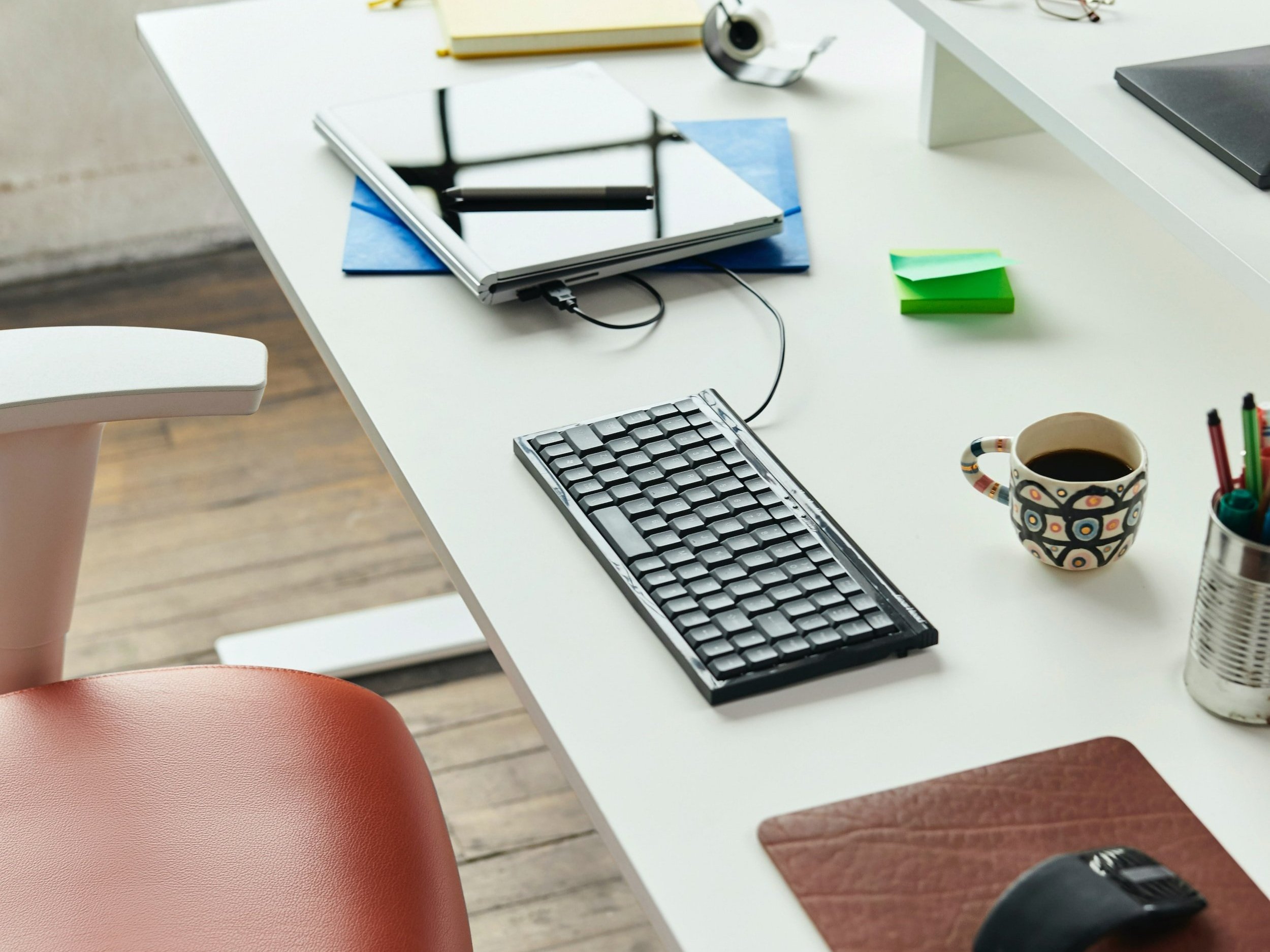How to Create a Space for Working from Home if You Don’t Have a Home Office
Millions of people around the world have been adjusting to new remote working environments since the start of the pandemic. With over two thirds of people believing they are equally or more productive when working from home, the benefits of this approach are clear. However, to create the best conditions for optimal productivity, you will need to set up your own remote working space.
For those who already have an office or study room set up, this will be relatively straightforward. But within those homes where space is at a premium, it might require slightly more imagination to create a functioning space.
Fortunately, you don’t have to redesign an entire room in order to work effectively from home. Here are a few things to take into consideration to help you create a productive and comfortable remote working space, whether you have a whole room or just a corner to spare.
image © unsplash
Find the Right Chair
One of the most important components of any office space, but particularly at home, is the chair you use. Working from home brings with it the temptation to enforce a mobile working policy, moving from the comfort of bed to the sofa and back to bed again. Whilst this approach may initially seem more comfortable, it’s not the most conducive method to promoting productivity and a healthy lifestyle.
Ideally, you should separate your work and personal time as best as possible, and this starts with the setup of your chair. Working in spaces where you would usually relax can trick your mind into thinking that it’s time to work when you should in fact be switching off.
What’s more, sitting or even lying on the bed or sofa can encourage bad posture which in turn can lead to injuries or pains in all different parts of the body. To promote good posture, invest in an ergonomic chair. They are designed to provide added comfort and support, particularly for your neck and back, and can even improve blood circulation.
Allow for Natural Light
If you don’t have an office set up already, try and base your home working environment in a naturally well-lit room. Being in a room that is exposed to a natural light source can provide plenty of benefits throughout the working day, and in your personal life, too. For example, whilst you're working, it can help to reduce eye strain which is often caused by poor lighting.
If sunlight is at a premium within your home, consider ways to retain as much light as possible, such as mirrors and complementary colour schemes. If this isn’t an option, then good artificial light sources will do a similar job in helping to reduce eye strain and boost productivity. There are lots of different lighting options available for home use, from LED to accent lighting, so you can be sure to find one that’s right for you and your home.
Smart Designs
By getting a little creative with what space you have, you can transform a corner of your home into a fully functional workspace. Clever storage solutions for your office equipment can allow you to easily set up your desk in the morning, and quickly conceal it at the end of the day so it doesn’t take up any space outside of working hours.
Not only is this an efficient way of setting up your home office and maximising space, it can also help you to draw the line between work and personal time. Packing away your working supplies means you will avoid the temptation to quickly check your emails or finish a task when you should be enjoying your personal time, promoting a better work/life balance.
Head to CADdetails.com for more inspiration to ensure you’re getting the most out of your working space.
cover image © unsplash







